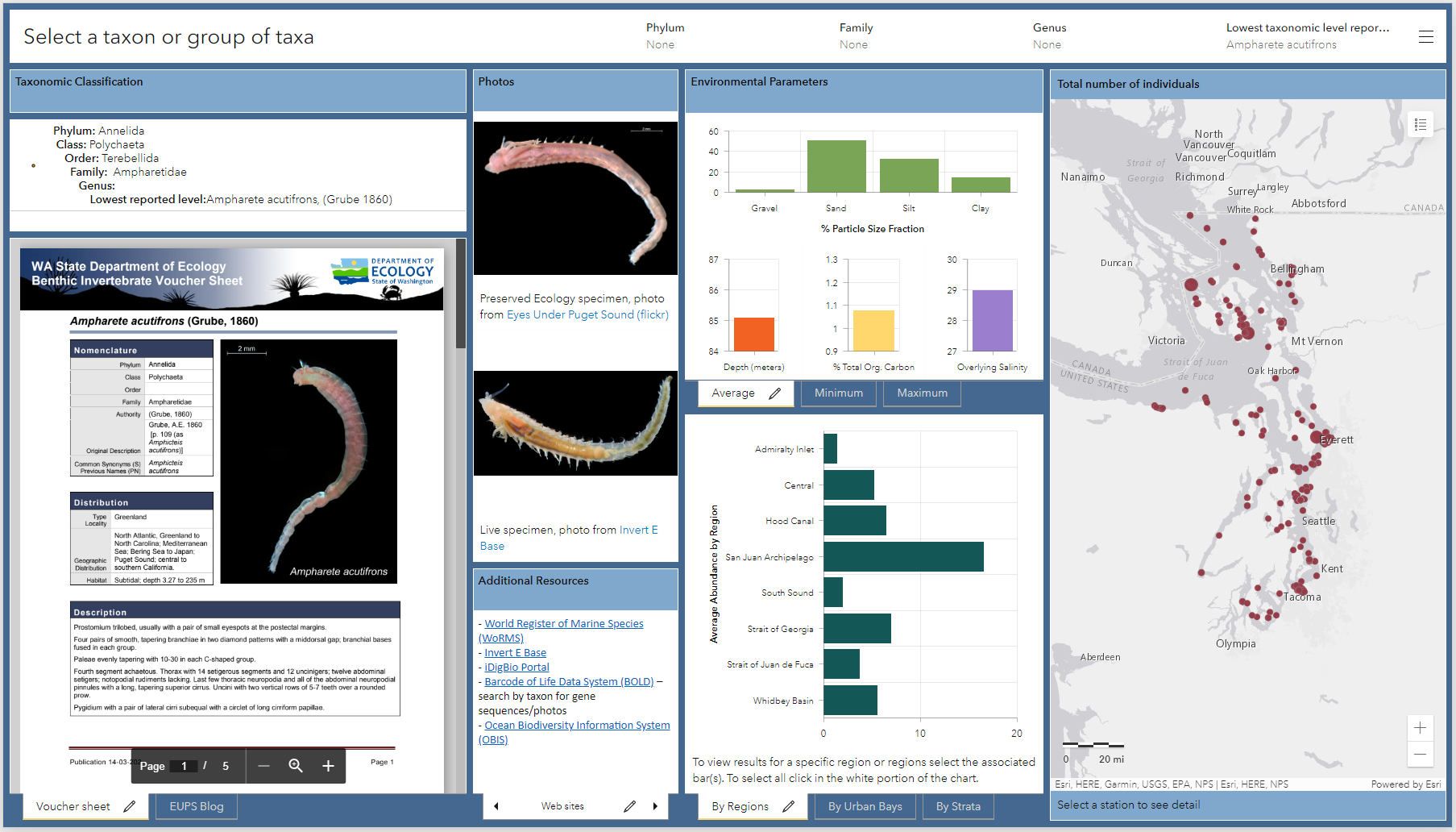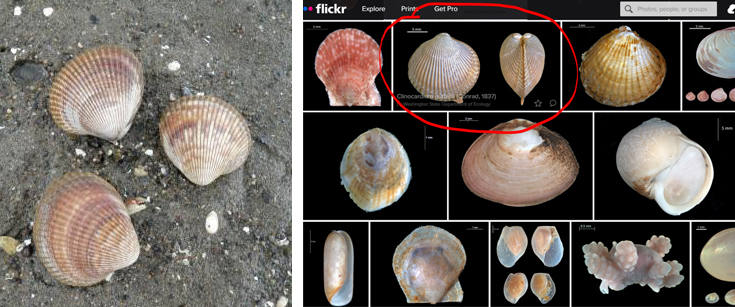
Calocarides spinulicauda from 2019 Puget Sound DNA barcoding project; photo by Gustav Paulay, FL Museum of Natural History.
Puget Sound is home to many types of invertebrates, each playing a different role in the sediment ecosystem. Taxonomically identifying them to genus and species can give us information about the health of the communities in which they live…. but we can’t do it without an arsenal of specialized tools.
Our Marine Sediment Monitoring Team is excited to release a new ArcGIS StoryMap: The Puget Sound Benthos Toolbox. Unlike our other story maps which focus on specific projects and results, this one is all about the benthic (bottom-dwelling) invertebrates found in Puget Sound (here’s looking at you, Critter of the Month)!
Tools of the trade
What, you might ask, is in a taxonomist’s toolbox? Well, you certainly won’t find wrenches, screwdrivers, or even needle-nose pliers. The tools of the taxonomy trade are reference materials and data that help us identify organisms: photographs, illustrations, species descriptions, habitat information, and — in recent years — DNA sequences. The Puget Sound Benthos Toolbox combines these elements in a one-stop-shop format that allows users to access all available reference materials for each species.
The main element of the Toolbox is an interactive dashboard that allows users to select species or groups, automatically populating a map and graphs with environmental ranges and abundance data. This can be useful when trying to figure out if there are “hotspots” in the Sound for certain species, or what types of habitats a species prefers. For example, does the marine worm Ampharete acutifrons typically live in shallow or deep areas, in mud or sand?
A search in the Toolbox’s interactive dashboard brings up specimen photos and a voucher sheet on the left, and a species-specific map and graphs on the right
Explore the world of critters
The Benthos Toolbox isn’t just for taxonomists. You can zoom in to a particular location (say, near your home) to see a list of species we have encountered there, or if you are out on a beach and find an interesting shell that you want to identify, you can easily access our mollusk Flickr photo gallery to see if there’s a match.
One thing you might notice is that photos and descriptions are missing for many species. Our list of Puget Sound invertebrates is over 1,200 (and growing!), so populating reference materials for all of them is a monumental task. We will be updating the toolbox frequently with new materials, so check back often!
The heart cockle can be found on Puget Sound beaches (left), as well as in our Eyes Under Puget Sound Flickr photo gallery (right). Left photo by WA Dept of Fish and Wildlife.
Eyes Under Puget Sound
Dany is a benthic taxonomist, a scientist who identifies and counts the sediment-dwelling organisms in our samples as part of our Marine Sediment Monitoring Program. We track the numbers and types of species we see to detect changes over time and understand the health of Puget Sound. Can't get enough benthos? See photos from our Eyes Under Puget Sound collection on Flickr.



